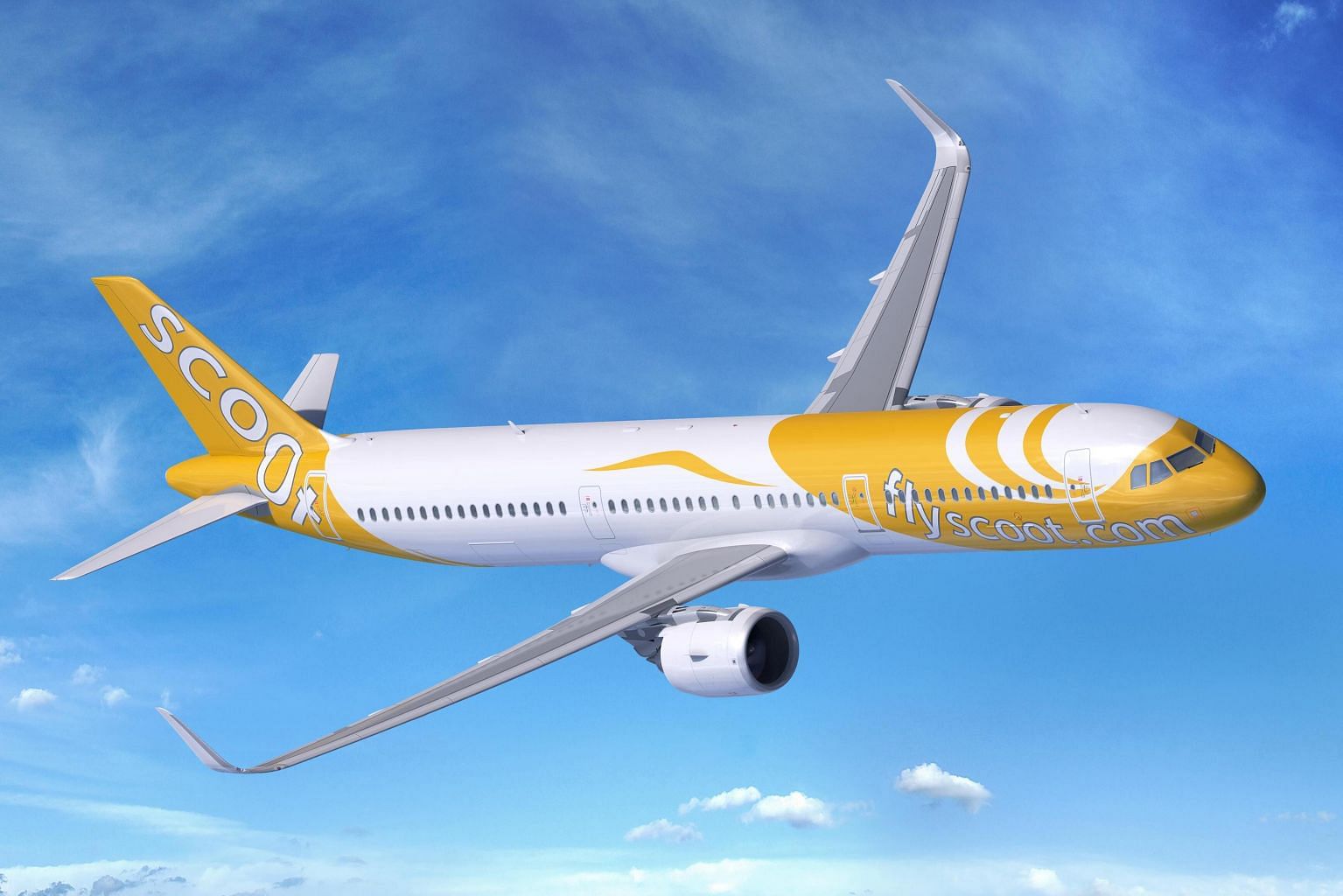Scoot taking 16 new fuel-efficient Airbus 321neos to add capacity and grow profits
Sign up now: Get ST's newsletters delivered to your inbox

The new planes will also help the airline add capacity at busy airports where landing slots are limited, said Scoot chief executive Lee Lik Hsin.
PHOTO: AIRBUS
Karamjit Kaur
Follow topic:
SINGAPORE - Scoot customers can look forward to brand new planes that will also help the Singapore Airlines' (SIA) budget arm to reverse a downturn that has hit its bottom line.
The introduction of 16 new Airbus 321neo aircraft - the first of which will be delivered in the last quarter of 2020 - will be used on routes with flight times within six hours.
This covers several markets, including South-east Asia, Scoot's chief executive Lee Lik Hsin told The Straits Times. The A-321neo will fill a strategic gap in Scoot's operations, he said.
"Our current fleet is made up of the A-320 which has between 180 and 186 seats, and the Boeing 787 which has between 329 and 375 seats. The new A-321neo with 236 seats each sits right in the middle."
"This will allow us to grow in a gradual fashion, instead of having to jump from the A-320 to B-787 which can be quite wide," Mr Lee added.
Scoot now has 29 A-320s and 20 B-787s.
The new planes will also help the airline add capacity at busy airports where landing slots are limited, he said.
More critical for the bottom line is the fact the A-321neos are more fuel-efficient per seat than Scoot's current single-aisle aircraft.
Mr Lee said: "There is an expected fuel cost savings of 12 per cent compared to the A-320neos and 20 per cent compared to the A-320ceos. This will put us in a much stronger competitive position."
In the 12 months that ended in March, Scoot reported an operating loss of $15 million, the first after three years of profits.
"The demand, supply balance turned against us," Mr Lee said.
Despite the slowdown after two good years in 2016 and 2017, it is not all doom and gloom.
Mr Lee said: "It's cyclical, so we expect the current situation to eventually reverse. Either the market catches up (and demand picks up), or some of the airlines pull back a little."
Competition has been picking up on several routes, he added.
"In China, for example, we used to be the sole operator on some routes; a nice position to be in. But Chinese carriers have since mounted services which have made the business a tougher proposition for us," Mr Lee said.
The routes include Ningbo, Naning, Harbin and Nanchang.
Mr Lee said: "Although demand and supply matching is never perfect, we do believe there will be growth... We just have to ride out this temporary slow period."
Being part of the SIA group is a key strategic advantage, he said.
"Of course as a unit, we are expected to make money... But because we are part of the SIA group, we don't have cash flow issues that impact our network decisions."
"For example, we don't have to cut routes because we don't have cash to fund the growth."
Scoot, which started flying in June 2012, has carried over 60 million passengers so far. It currently flies to 68 destinations across 17 countries and territories.
By the second half of 2020, nine more destinations in China, India, Indonesia and Malaysia will be added to the network.
A new long-haul route is also possible by the end of next year, he said.
In June 2017, Scoot launched its first long-haul route to Athens and, a year later, added Berlin to its network.
Mr Lee said: "Operating flights longer than 10 hours is a challenging proposition for a budget airline but we do believe that there are niches."
Scoot is actively exploring new routes in Europe and could add a third long-haul service before the end of next year, he said.
Correction note: This article has been updated for accuracy.

